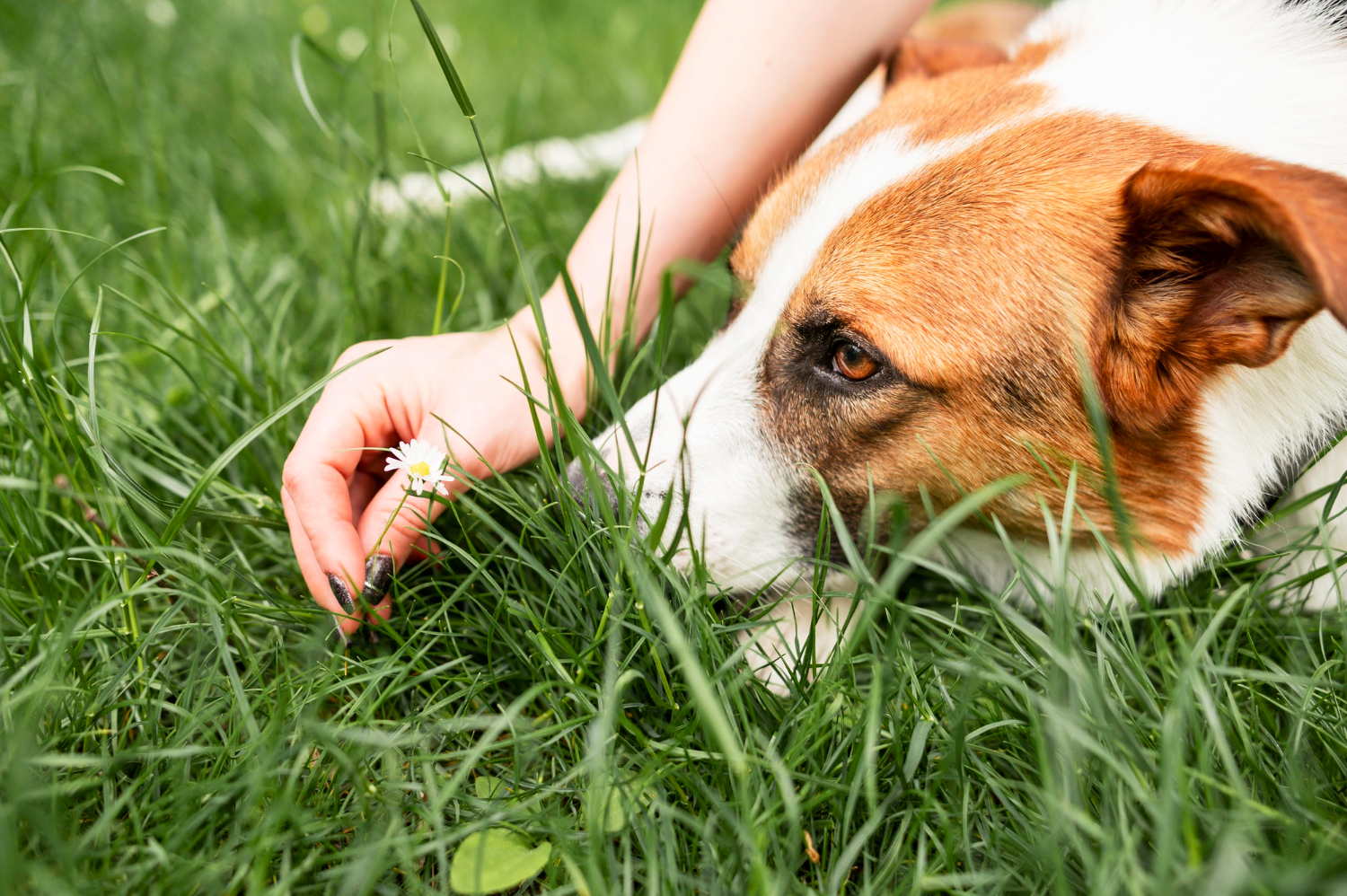How to Protect Your Dog From Ticks

Ticks might be tiny, but they can cause big problems for your furry companion. These little parasites love to hide in tall grass and wooded areas, waiting for the chance to latch onto your dog’s skin. Not only are they unpleasant, but they can also transmit serious diseases like Lyme disease, anaplasmosis, and ehrlichiosis.
As a dog owner, it’s natural to want your pup to enjoy the great outdoors. With just a few easy habits, you can help protect them from ticks and keep them healthy, happy, and full of tail wags.
Why Tick Prevention Matters for Your Dog and Your Family
Tick prevention isn’t just about your dog; it’s also about protecting everyone in your home. Ticks can hitch a ride indoors and pose a risk to humans, too. By keeping ticks off your pup, you’re creating a safer, healthier space for your whole family.
Ticks can lead to costly vet visits and can really take a toll on your dog’s energy and well-being. The good news? Most tick-related issues are completely preventable with a little planning and consistency.
What to Consider Before Choosing a Preventive
There’s no one-size-fits-all answer when it comes to parasite prevention. Here are a few things to think about when making your decision:
1. How the Medication is Given
Flea and tick meds typically come in two forms:
- Oral (chewable): Easy to give, especially if your dog thinks it’s a treat. Just make sure they actually eat it and don’t spit it out or throw it up.
- Topical (spot-on): Applied to the skin, usually between the shoulder blades. Great for picky eaters, but you’ll need to keep kids and other pets away until it dries. Also, frequent swimmers or dogs who get a lot of baths may need a different option.
2. Geography
As Veterinarian Lauren Jones, VMD states in the PetMD article:
“Different geographic locations have different local parasite populations, including fleas and ticks.
The Companion Animal Parasite Council is a helpful resource to identify the parasites in your area so you can make sure whichever flea and tick product you choose keeps your dog fully protected.
3. Access to the Outdoors
Consider the types of outdoor areas where your dog spends time. Dog parks, hiking trails, wooded areas, parks, bushes, and backyards can all be homes to fleas and ticks. If your dog spends a lot of time in wooded areas or spaces where other animals and dogs spend a lot of time, their risk of exposure to parasites is higher.
Even if your dog doesn’t spend a lot of time outside, fleas can easily come in through window screens, on other pets that go outside, or even on a person’s pants and shoes. Veterinarians recommend flea and tick prevention regardless of how much time a dog spends outdoors.
4. MDR-1 Gene
Some breeds (such as Collies, Australian Shepherds, and Shetland Sheepdogs) have a gene mutation called MDR-1 that makes it harder for them to break down certain types of medications.
Many veterinarians recommend testing dogs for the MDR-1 gene, especially affected breeds. That said, many manufacturers of parasite preventatives have tested their products for safety on dogs with the MDR1 mutation and found they had no adverse effects.”
5. Life Stage
If your furry friend is still in their puppy phase, or if they’re a small breed, it’s especially important to choose flea and tick products carefully. Many preventatives aren’t suitable for very young or tiny dogs, and some have a minimum age or weight requirement (often 6 to 8 weeks of age). Your veterinarian can help you select a product that’s both safe and effective for your dog’s specific stage of life.
Get to Know the Ticks That Target Dogs
Not all ticks are the same, and knowing what’s out there can help you stay one step ahead. Here are a few of the common culprits:
- Deer Tick (Black-legged Tick): Common in the Northeast and Midwest, these ticks are known for spreading Lyme disease.
- American Dog Tick: You’ll often find these in grassy fields. They can carry Rocky Mountain spotted fever.
- Brown Dog Tick: These guys are extra sneaky—they can live their whole lives indoors and thrive in warm climates. They’re known for spreading ehrlichiosis.

How to Tell if Your Dog Has a Tick
Your dog can’t tell you if something feels off, but they might give you a few clues. Look out for:
- Frequent scratching or licking: If your dog keeps going after a certain spot, it could be a tick.
- Red or irritated skin: Check for redness, swelling, or inflammation.
- Small bumps: Ticks can feel like tiny skin tags, so run your hands over your dog’s body regularly to check.
Simple Ways to Keep Ticks Off Your Dog
Here are some easy, everyday steps you can take to help keep ticks at bay:
- Check after walks: Especially if you’ve been in tall grass or wooded areas. Look around the ears, between the toes, under the collar, and near the tail.
- Keep your yard tidy: Trim back overgrown grass and remove piles of leaves or brush where ticks might hide.
- Protective gear: Consider tick-repellent clothing like bandanas or vests if you’re heading into tick-prone areas.
Grooming Is The Easiest Way to Catch Ticks Early
Grooming isn’t just about keeping your dog looking their best—it’s one of the easiest ways to catch ticks early:
- Brush regularly: A fine-tooth comb can help remove any hitchhiking ticks and alert you to any skin issues.
- Use tick-repelling shampoos: Give your dog a bath with specially formulated shampoos during tick season.
- Check hidden spots: Don’t forget under the ears, around the groin, and in between the toes.
How Can Pet Insurance Help You if Your Dog Needs Treatment?
Pet insurance can be a valuable tool in managing the costs of treating a dog’s veterinary expenses. By having a pet insurance policy in place, you can have peace of mind knowing that you can provide medical care for your furry companion without worrying about the financial burden. Pet insurance can help cover the costs of veterinary consultations, diagnostic tests, medications, and even specialized treatments if required.
Reimbursement
This method is the most common for pet insurance companies. You pay out of pocket for the veterinarian bill, and then the insurance company reimburses you for what’s covered under the insurance plan. The steps look like this.
- You pay the vet bill after your dog’s visit.
- You fill out the pet insurance claim form.
- Submit the claim form and other required documentation to the insurer.
- After the claim is approved, you will be reimbursed for eligible expenses.
What Does Odie Pet Insurance Cover?
Pet insurance covers various veterinary expenses, providing financial protection and peace of mind for pet owners. Here are the details of the coverage options offered by Odie Pet Insurance:
Illness & Injury Plan
The Illness & Injury Plan is an all-inclusive insurance plan designed to cover a wide range of medical needs for your pet. This plan includes comprehensive coverage for various illnesses, injuries, and veterinary services. Some of the covered items include:
- Veterinary exams and consultations
- Diagnostics (e.g., X-rays, lab tests)
- Prescribed medications
- Surgeries and hospitalization
- Rehabilitation, acupuncture, or chiropractic treatments
- Medically necessary supplies
- Euthanasia and cremation
The Wellness Plan
The Wellness Plan is a monthly membership that focuses on preventive care and covers routine veterinary services.
- Provides reimbursements for routine care items such as wellness visits (exams and vaccines), testing and parasite prevention, dental cleanings and at-home dental care, vitamins, supplements, and more.
- Through Odie’s partnership with Petivity, a leader in smart pet products and proactive care, Wellness Plan members can also receive reimbursements for Petivity devices and health kits, as well as eligible Purina food and supplements.
- Total reimbursement up to $700 per year.



